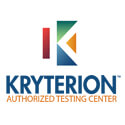Monitoring and Operating a Private Cloud (70-246)
About This Course
This course prepares professionals for the MS 70-246 examination i.e. Monitoring and Operating a Private Cloud using System Center 2012. The course offers a comprehensive coverage of the skills and expertise required for operating a private cloud using the System Center 2012.
Further, the course also offers you with the required training for administering private clouds along with managing private cloud apps, infrastructure monitoring for key elements and much more. Simply put, the course blends in all the essential features that will help you prepare for the Monitoring and Operating a Private Cloud 70-246 exam.
Who Should Attend This Course
- Candidates interested for this exam should have experience with System Center 2012, Windows Server, high-availability, security, networking experience and fault tolerance in enterprise environment.
- You should also possess knowledge of basic Windows PowerShell knowledge, application configuration and Microsoft SQL Server.
Why This Course
This course prepares professionals for the MS 70-246 examination i.e. Monitoring and Operating a Private Cloud using System Center 2012. The course offers a comprehensive coverage of the skills and expertise required for operating a private cloud using the System Center 2012.
- Describing private cloud infrastructure
- Optimizing and configuring business clouds
- Deploying cloud services
- Configuring dashboards, widgets and SLAs
- Configuring compliance in private clouds
- Protecting resources in private cloud using Data Protection Manager
- Automating Self-Service provisioning
- Implementing problem management
- Automating remediation, change requests and incident creation
- Operating and extending service management
- Configuring application performance monitoring
- Monitoring private cloud services
Course Objectives
- Configuring data center process automation
- Deploying resource monitoring
- Monitoring resources
- Configuring and maintaining service management
- Managing protection and configuration
Course Prerequisites
- Professionals should have certain amount of experience in managing Windows servers and desktops.
- You also must be familiar with the basics of virtualization.
Course Benefits
The course helps you in:
- Describing private cloud infrastructure
- Optimizing and configuring business clouds
- Deploying cloud services
- Configuring dashboards, widgets and SLAs
- Configuring compliance in private clouds
- Protecting resources in private cloud using Data Protection Manager
- Automating Self-Service provisioning
- Implementing problem management
- Automating remediation, change requests and incident creation
- Operating and extending service management
- Configuring application performance monitoring
- Monitoring private cloud services





























